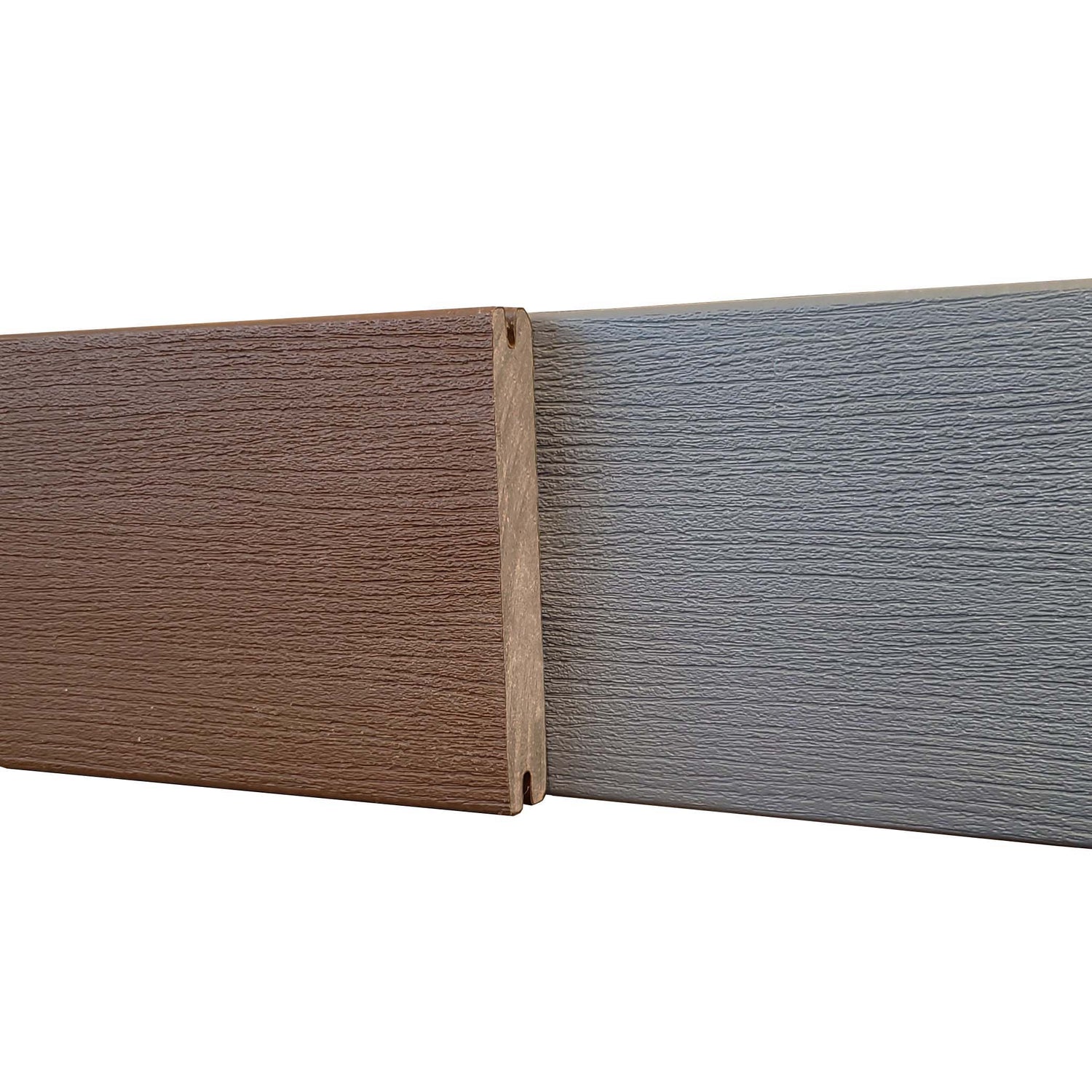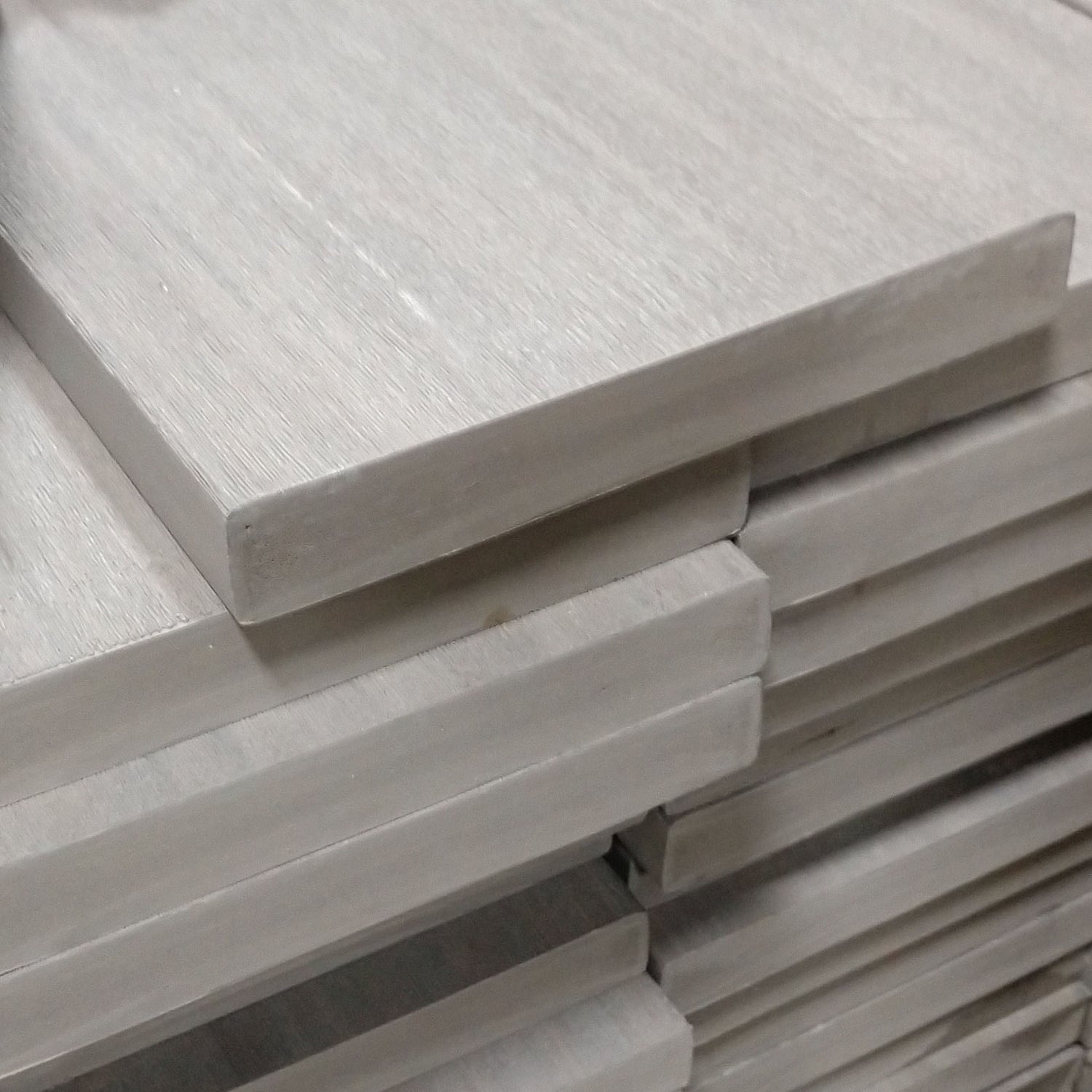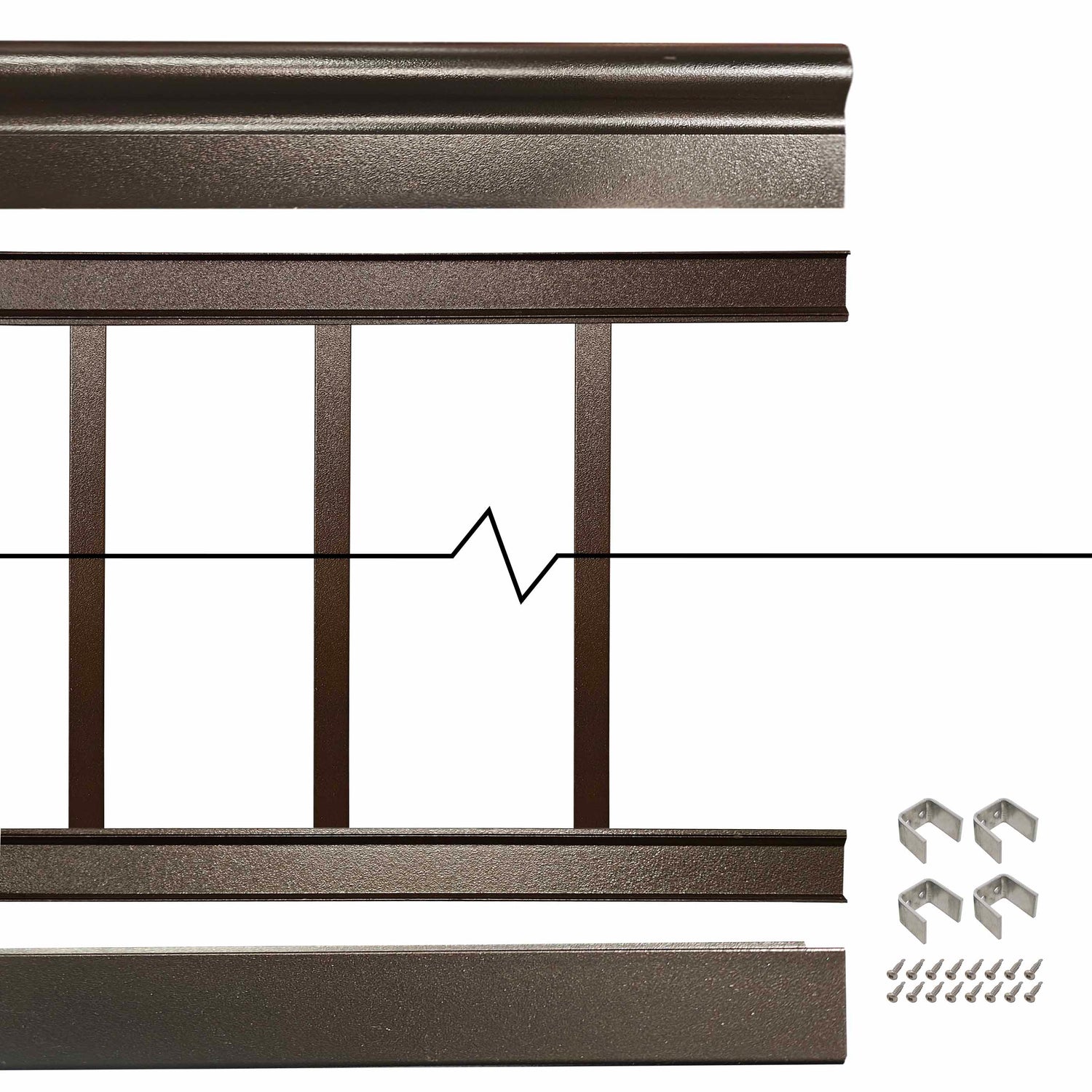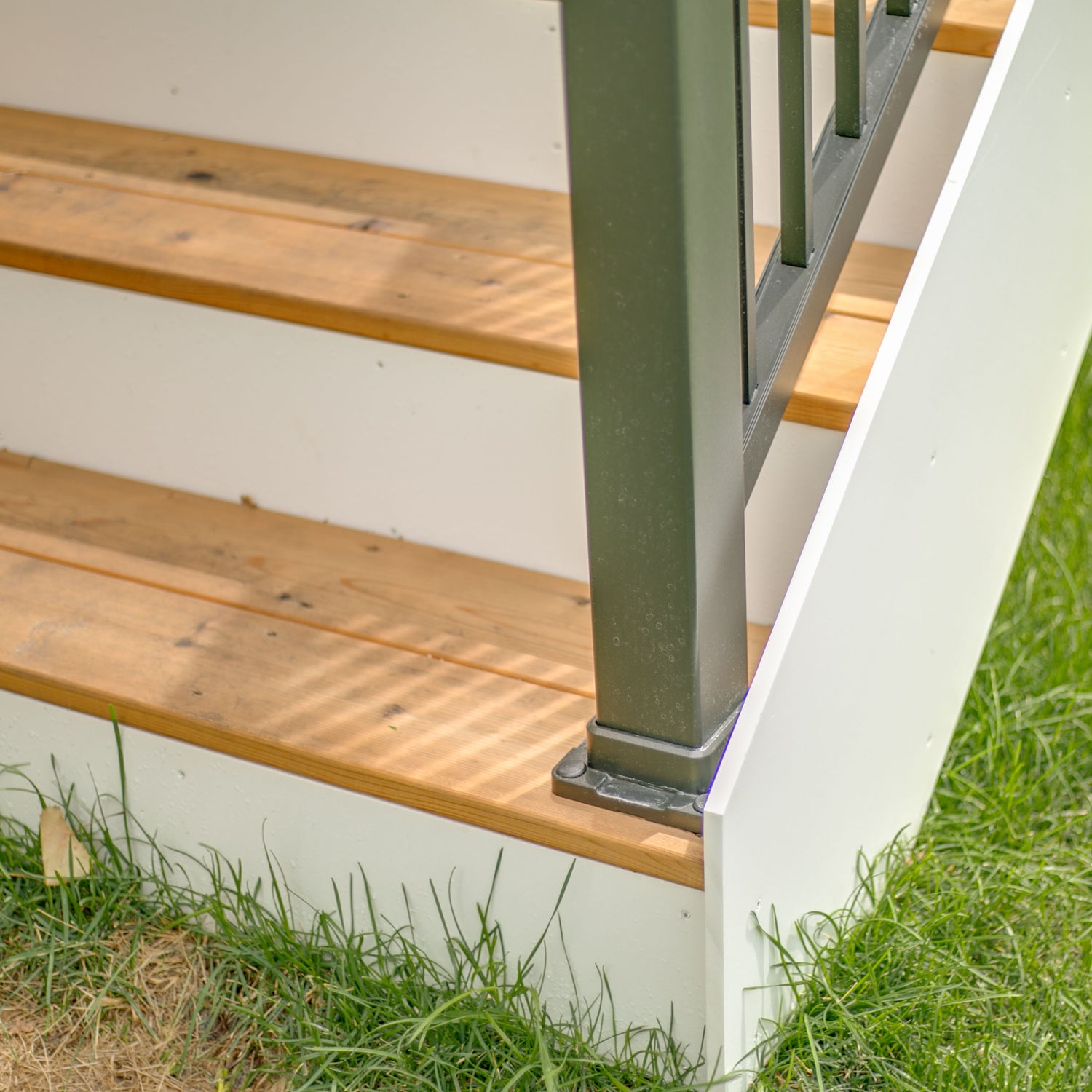
Composite Decking
Decking made from resins, recycled material, and wood fillers is dense. It needs pre-drilling on screws near the end, gaps between boards and board ends, and we don't recommend butt-seaming or random-seaming it.

PVC Decking
If you like working with wood, PVC is going to be the most similar to work with. It's resilient, doesn't require pre-drilling, cuts quickly, and can be machined and glued easily.

Aluminum Railing
Aluminum railing panels and surface-mount posts are the bread-and-butter of deck rail choices. Although you will need to do some extra math to center your balusters in the panel, the ease of installing a surface-mount post should make up for it. Panels generally come with installation hardware for metal posts, and posts usually come with a base cover and post cap. No painting required, balusters or baluster holes are already pre-spaced and don't need tedious marking and fastening.
Aluminum railing can be cleanly cut with a miter saw and non-ferrous toothed metal blade. Other carbide toothed blades may work (or a backwards framing blade), but we don't recommend it.

Stairs
If you're using a rail system with surface-mounted posts, you will need to widen your stair to accommodate for the space the railing occupies. If the narrowest point on your stair can be no less than 36", we recommend that your stair be built to 46" minimum width. Only a handful of low-maintenance railing manufacturers offer an outside-mounted system that is convenient and attractive.

Joists
Joists should be spaced no more than 16" on center for decking laid perpendicular to the joists, and 12" on center for decking run at a 45 degree angle to the joists.
To minimize beams and footings, we recommend 2x10 joists if you want to span up to 15 feet from the ledger to the beam. 2x8s and 2x6s can be used, but are rare on decks with long clear spans, due to the strength of "new-growth" treated lumber.
